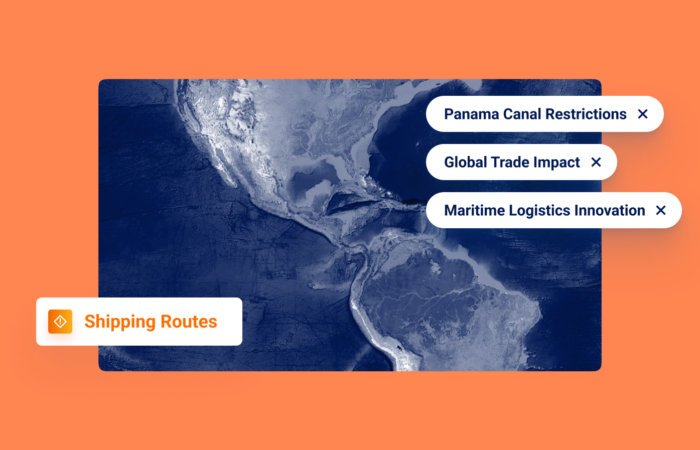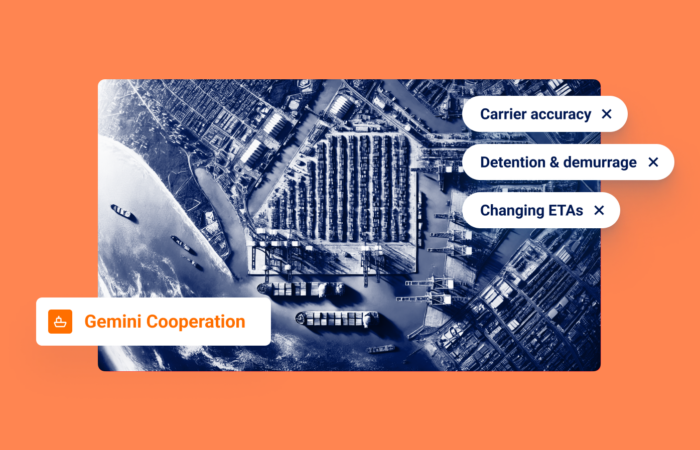3 Top Technology Trends for Ocean Supply Chain in 2024

What’s inside?
2024 will be challenging for supply chain professionals and ocean logistics service providers (LSPs), already starting with disruptions in the Red Sea area due to Yemen’s Houthi rebels (this blog post won’t focus on the crisis, but our upcoming webinar will), the Panama Canal drought, the ongoing impact of the Russia-Ukraine war and its accompanying sanctions, etc.
More than ever, supply chain professionals and LSPs need to find ways to meet the challenges. There are several technology principles that can help organizations optimize their operations, so they can more easily navigate the obstacles that are arising. Let’s take a look at three of the major ocean freight trends of 2024 that can increase efficiency of supply chain operations and transportation management systems (TMS), using state of the art technology that can help overcome the challenges that appear to be here for the near future.
AI and Machine Learning
Since the launch of Chat GPT at the end of 2022, artificial intelligence (AI) has undergone rapid evolution and its overall benefits have become even more evident. Many industries are working tirelessly to develop and launch AI-based solutions that enhance productivity and increase bottom-line profits. These solutions, including generative AI, are expected to expand into unique industries in 2024, such as supply chain and logistics. Companies that do not integrate AI into their core business may find it difficult to compete.
AI drives efficiencies and helps employees work more effectively by spending less time on repetitive tasks, focusing instead on strategic decision-making. Maritime AI™ offers maritime professionals and decision-makers an efficient and automatic way to recognize trends and patterns, proactively identifying potential problems and opportunities. This will make them more accurate, reliable, and agile, which results in significant competitive advantages and cost-savings.
AI enables sorting through huge amounts of data to offer accurate and personalized alerts and recommendations. For example, when attempting to accurately determine vessel ETA for ocean freight vessels, AI can synthesize hundreds of millions of data points, including weather, port congestion worldwide, type of ship and its cargo, transshipments, etc., to immediately produce an accurate insight.

Developing the Right Architecture for High Volumes of Data
The successful adoption of AI tools depends on the availability of high volumes of existing data – the more data an algorithm processes, the better it performs. The challenge is to make these high volumes of relevant data accessible when much of it is unstructured, scattered, and often unavailable.
For example, an AI-based solution could alert an importer about potential demurrage fees if the organization’s container is held at the port for five days. But as comprehensive as the AI model may be, it may not initially recognize the importer’s unique terms with the port, such as excluding demurrage fees for the first eight days. AI tools can only provide customized alerts against ocean freight hazards after scanning the contract. But the organization needs to process hundreds of such contracts, as well as endless other unstructured data at scale.
Organizations and software providers are increasingly focused on standardizing data to maximize processing capabilities. When this isn’t feasible, they work to facilitate the proper data architecture needed to process “dirty data,” which isn’t unified or standardized. This approach is crucial to unify data from transport management systems, software, carriers, and other supply chain providers.
Implementing Technology Transformation Across All Employee Levels
If your team isn’t engaged, you can’t successfully adopt digitization, and your organization could, as a result, fall behind your competitors. In 2024 it’s not just about selecting technologies that elevate performance, but it’s also about training employees to use innovative tools that are implemented throughout the organization. This is even more crucial during times of restricted spending and smaller work forces.
Logistics organizations and software solution providers must ensure that all employees are on board. A range of companies have learned that an effective training and implementation plan for all employees, coupled with a user-friendly experience, is critical to transforming business operations.
Getting Focused in 2024
Keeping these three main trends in mind with full automation and predictive analytics is a good start to the year. This approach will ensure your decision-making technology suite can help you efficiently navigate the obstacles that 2024 are bound to throw up, and come out ahead of the competition.
Check out our 2024’s Top Trends in Ocean Supply Chain guide for more about what to expect in the ocean supply chain space, including two use cases for generative AI and the importance of supply chain velocity.












